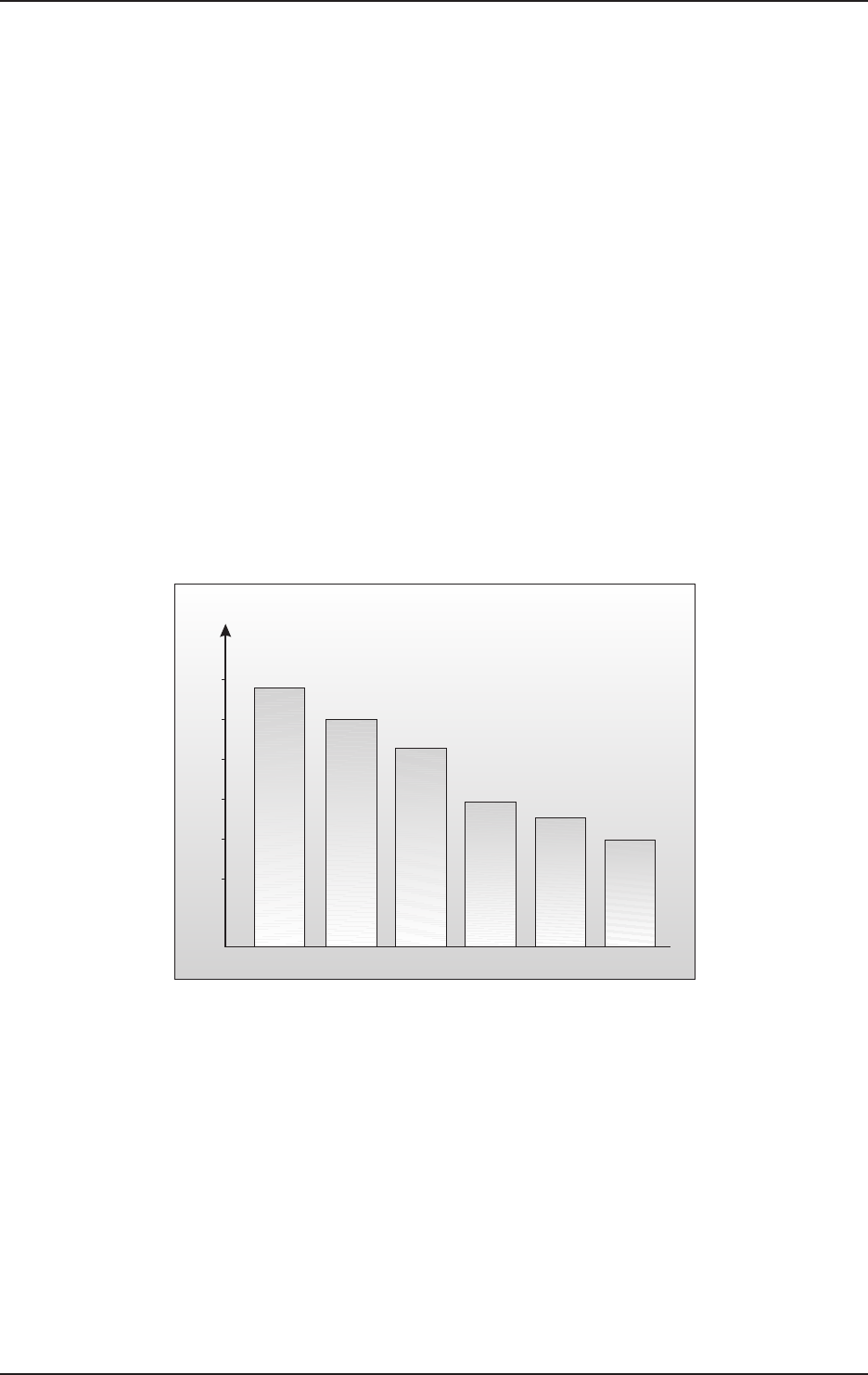
14
TUBE ULTRAGAIN T1953
without components. Even if special low-noise components are used, a certain degree of basic noise cannot
be avoided.
This effect is similar when replaying a tape. The non-directional magnetic particles passing the replay head can
also cause uncontrolled currents and voltages. The resulting sound of the various frequencies is heard as
noise. Even the best possible tape biasing can only provide signal-to-noise ratios of about 70dB, which is not
acceptable today since the demands of listeners have increased. Due to the laws of physics, improving the
design of the magnetic carrier is impossible using conventional means.
4.1.2 What are audio dynamics?
The human ear can detect the most wide ranging amplitude changesfrom the slightest whisper to the
deafening roar of a jet-plane. If one tried to record or reproduce this wide spectrum of sound with the help of
amplifiers, cassette recorders, records or even digital recorders (CD, DAT etc.), one would immediately be
restricted by the physical limitations of electronic and acoustic sound reproduction technology.
The usable dynamic range of electroacoustic equipment is limited as much at the low end as at the high end.
The thermal noise of the electrons in the components results in an audible basic noise floor and thus
represents the bottom limit of the transmission range. The upper limit is determined by the levels of the internal
operating voltages; if they are exceeded, audible signal distortion is the result. Although in theory, the usable
dynamic range sits between these two limits, it is considerably smaller in practice, since a certain reserve
must be maintained to avoid distortion of the audio signal if sudden level peaks occur. Technically speaking,
we refer to this reserve as headroomusually this is about 10 - 20dB. A reduction of the operating level
would allow for greater headroom, i.e. the risk of signal distortion due to level peaks would be reduced.
However, at the same time, the basic noise floor of the program material would be increased considerably.
Ear
Microphone Amplifier
Power Amplifier
Tape Recorder
Radio
Cassette
Recorder
P/dB
140
120
100
80
60
40
Fig. 4.2: The dynamic range capabilities of various devices
It is therefore useful to keep the operating level as high as possible without risking signal distortion in order to
achieve optimum transmission quality.
It is possible to further improve the transmission quality by constantly monitoring the program material with the
aid of a volume fader, which manually levels the material. During low passages the gain is increased, during
loud passages the gain is reduced. Of course it is fairly obvious that this kind of manual control is rather
restrictive; it is difficult to detect signal peaks and it is almost impossible to level them out. Manual control is
simply not fast enough to be satisfactory.
4. TECHNICAL BACKGROUND


















